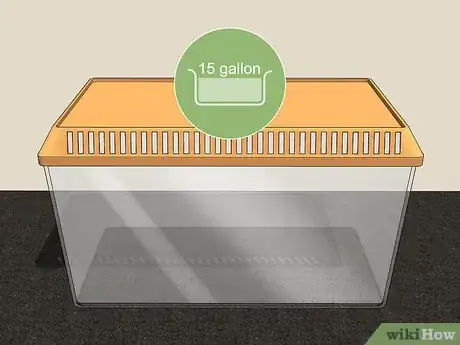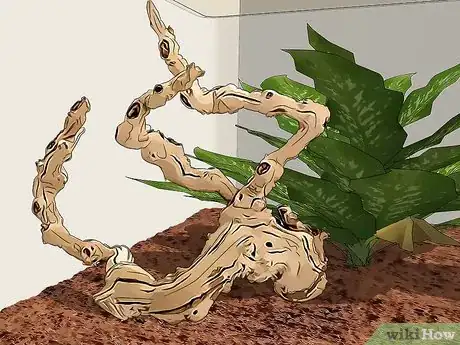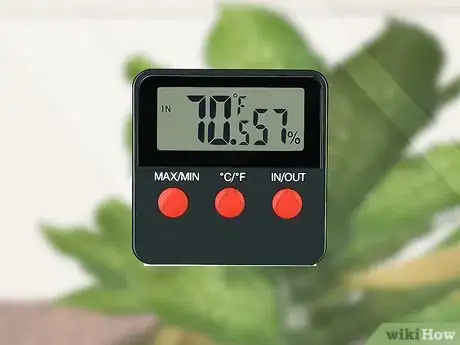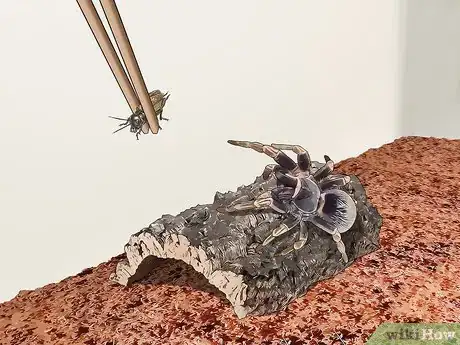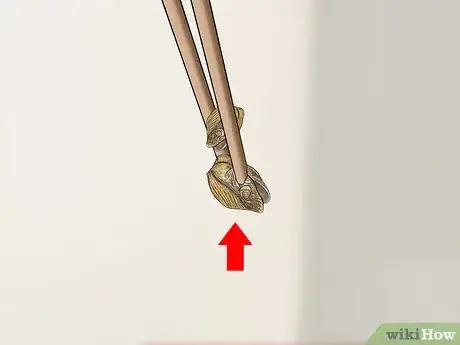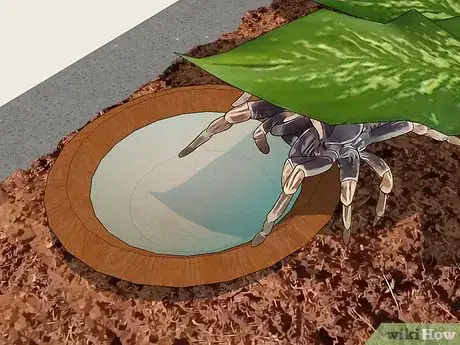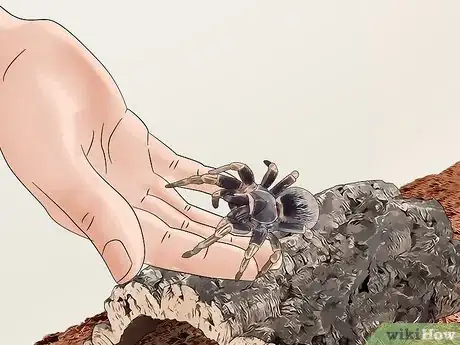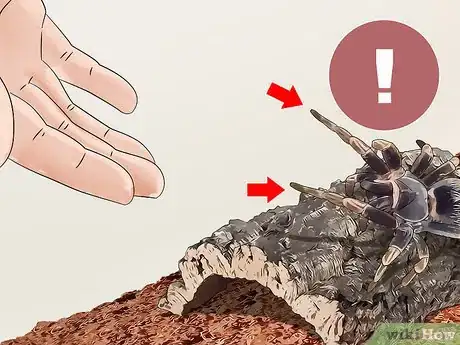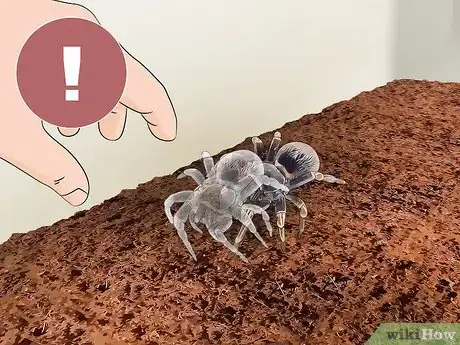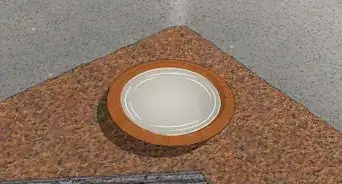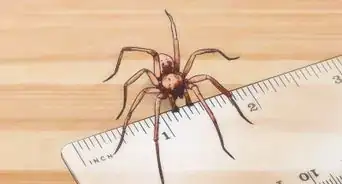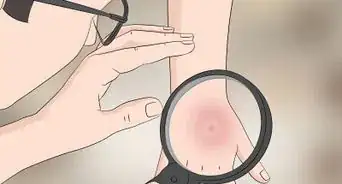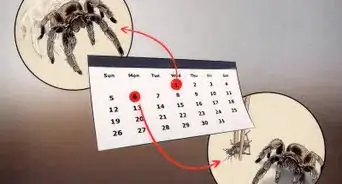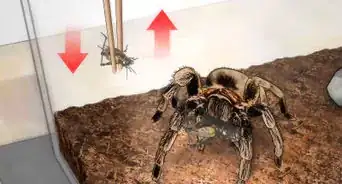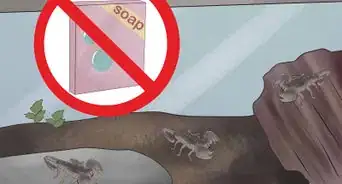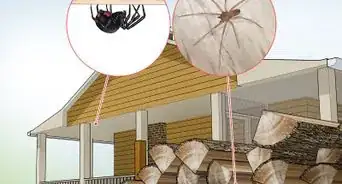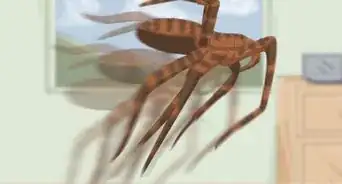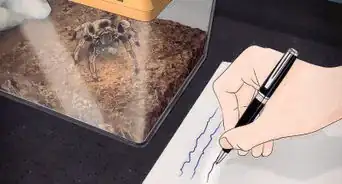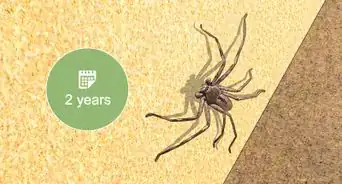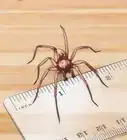This article was co-authored by wikiHow Staff. Our trained team of editors and researchers validate articles for accuracy and comprehensiveness. wikiHow's Content Management Team carefully monitors the work from our editorial staff to ensure that each article is backed by trusted research and meets our high quality standards.
There are 10 references cited in this article, which can be found at the bottom of the page.
This article has been viewed 49,958 times.
Learn more...
Considering the Chaco Golden Knee tarantula as a pet? They are great beginner tarantulas, as they are very docile and low maintenance. This magnificent species is very large, with some full-grown adults having a 7-inch leg span. The life expectancy of this tarantula is 5-10 years for males, and 20-25 years for females. Take special care of this delicate creature by creating the appropriate habitat, following a suitable feeding schedule, and handling with care.[1]
Steps
Creating a Habitat
-
1Get a 15-gallon terrarium. Chaco gold knee tarantulas are one of the larger species of tarantula, so they need a habitat that is big enough for them to move around in.[2] You can keep it in a plastic container with small air holes, or a glass container with a screen lid, both found at many pet stores.[3]
-
2Spread 6 inches of substrate on the bottom of your tank. The recommended substrate is coconut fiber, chemical-free potting compost, or peat moss. You can even do a combination of the three.
- Keep the substrate dry to avoid mold. You do not need to spray the tank with water like with some other tarantula species.[4]
Advertisement -
3Place a piece of cork bark in the tank for a daytime hiding spot. Tarantulas are nocturnal, so they need to have a place in their terrarium to hide in the daytime. You can also use a plastic hut, or any other hide you find at your local pet store.[5]
-
4Decorate your terrarium. You can use various items to decorate your tarantula’s terrarium, such as plants, cork bark, hollow logs, or driftwood. This is not required but may make your tarantula’s habitat more attractive.
- Fake plants are a great option because they do not require direct sunlight, and you do not need to water them.
- Avoid items that have sharp edges or are rough in texture, as well as décor from the outdoors that may have been exposed to pesticides or other hazardous materials. These items can injure your tarantula.[6]
-
5Monitor the temperature range and humidity of your terrarium. You can purchase a thermostat for your tank to check the temperature. You’ll need to maintain a tank temperature of between 65 and 78 degrees Fahrenheit. The humidity should remain around 55-65%.
- Keep the tank in a room out of direct sunlight. If the tank is located in a room that is within the ideal temperature range, you will not need to heat it.[7]
Feeding Your Tarantula
-
1Feed your Chaco gold knee 1-2 times per week. Chaco gold knees eat crickets, roaches, grasshoppers, and mealworms. Make sure prey is less than half the size of your tarantula’s body.
- Do not offer wild caught prey, as they may contain pesticides that can harm your tarantula.
-
2Remove insect parts after your tarantula has eaten. Take out any live prey or remnants, as they can stress out your tarantula if it is trying to rest.
- If your Chaco gold knee hasn’t eaten a prey item after a few hours, it isn’t hungry, and you should remove the food and try again in a day or so.[8]
-
3Provide water in a shallow dish. The water bowl should be half the size of your tarantula. You should also consider putting some small rocks in the dish to prevent live prey from drowning.
- Clean the water bowl at least once a week, or whenever necessary if it appears soiled.
- Clean water bowl right away if crickets or other prey end up dead in the water.
Handling Your Tarantula
-
1Handle your tarantula with extreme care. Chaco gold knees are typically very docile and most are okay with handling. If you want to hold it use the soft end of a paintbrush, or another similar soft item, to gently guide it towards you. When it starts moving, put your hand out, palm facing up, until it walks onto your hand.
- Be very careful to not drop your tarantula or let it run and fall from your hands. A fall can be life-threatening.[9]
-
2Avoid handing if you observe threatening behavior. If you approach your Chaco gold knee and it is standing with its first two legs fully extended into the air and front body lifted, it is agitated, and you should probably leave it alone.
- Another threatening stance will be your Chaco gold knee facing his back legs towards you and rubbing them against his abdomen. This is how they release hairs at predators. These hairs are a means of defense, causing a stinging sensation and irritation to the skin.[10]
-
3Do not disturb your Chaco gold knee while it is molting. Molting is the process that all tarantulas go through as they grow. They shed off extra skin much like a snake. During this growing process, they are in a very fragile state. You should not handle or feed your tarantula during this time, as this could result in their death.
Community Q&A
-
QuestionHow do I take care of a baby golden Chaco (Sibbles)?
 Community AnswerGolden babies are very valuable. If you wait too long and they mature, they turn bronze and people will not pay as much for the adult Chaco Gold Knees. Sell them as fast as possible, gold is going out of style, along with bronze.
Community AnswerGolden babies are very valuable. If you wait too long and they mature, they turn bronze and people will not pay as much for the adult Chaco Gold Knees. Sell them as fast as possible, gold is going out of style, along with bronze. -
QuestionHow do I measure my tarantula tank?
 Community AnswerFind a tank that is 3 times your tarantula's width, and 5 times it's length. You may need to change the tank when your tarantula grows bigger.
Community AnswerFind a tank that is 3 times your tarantula's width, and 5 times it's length. You may need to change the tank when your tarantula grows bigger. -
QuestionIs this tarantula good for a 12 year old kid?
 Community AnswerNo they are very delicate and if the child is not experienced with spiders, how they hold the spide can hurt the spider. Or, poor care can harm it as well, as they are difficult to feed. If the 12 year old is very responsible and shows a capacity to care for a delicate creature, then perhaps but otherwise, wait few more years.
Community AnswerNo they are very delicate and if the child is not experienced with spiders, how they hold the spide can hurt the spider. Or, poor care can harm it as well, as they are difficult to feed. If the 12 year old is very responsible and shows a capacity to care for a delicate creature, then perhaps but otherwise, wait few more years.
Warnings
- If threatened, the Chaco gold knee tarantula will fling hairs from their body. These hairs can irritate the skin and eyes.[14]⧼thumbs_response⧽
- Tarantulas may also bite if threatened. Although their bite is not life-threatening, they are venomous, and those sensitive to insect bites or bee stings may have an allergic reaction. Anyone bitten by a tarantula should seek medical attention just to stay on the safe side.[15]⧼thumbs_response⧽
- Holding a tarantula is not typically recommended. Tarantulas are extremely delicate and can be very unpredictable. A drop can rupture the abdomen and your tarantula will suffer a slow, painful death.[16]⧼thumbs_response⧽
Things You'll Need
- 15-Gallon Terrarium
- Substrate
- A Hide
- Shallow water bowl
- Food (cricket, mealworms, etc.)
- Decoration (optional)
References
- ↑ https://cosleyzoo.org/chaco-golden-knee-tarantula-2/
- ↑ https://animals.mom.me/needs-habitat-chaco-golden-knee-tarantula-5814.html
- ↑ http://www.tarantulas.com/care_info.html
- ↑ https://animals.mom.me/needs-habitat-chaco-golden-knee-tarantula-5814.html
- ↑ https://animals.mom.me/needs-habitat-chaco-golden-knee-tarantula-5814.html
- ↑ http://www.tarantulas.com/care_info.html
- ↑ https://animals.mom.me/needs-habitat-chaco-golden-knee-tarantula-5814.html
- ↑ https://animals.mom.me/needs-habitat-chaco-golden-knee-tarantula-5814.html
- ↑ https://animals.mom.me/different-tarantula-stances-mean-1927.html
- ↑ https://animals.mom.me/different-tarantula-stances-mean-1927.html
- ↑ https://www.tarantulaguide.com/tarantula-molting/
- ↑ https://animals.mom.me/needs-habitat-chaco-golden-knee-tarantula-5814.html
- ↑ https://www.petful.com/other-pets/pet-tarantulas-for-beginners/
- ↑ http://petcaretips.net/tarantula-species.html
- ↑ https://www.westernexterminator.com/spiders/everything-you-should-know-about-tarantulas/#Do%20tarantulas%20bite
- ↑ http://petcaretips.net/tarantula-species.html
